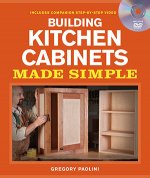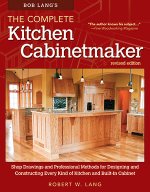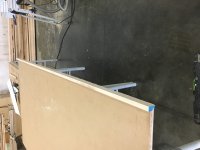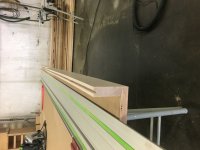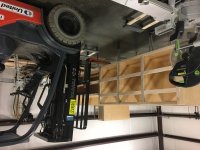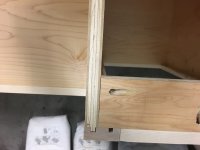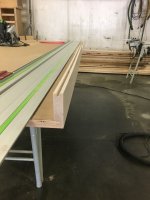- Joined
- Nov 21, 2015
- Messages
- 850
We all build cabinets of one kind or another, for our shop, for the kitchen, a book case: basically all boxes. So a while back a FOG post mentioned Bob Lang’s book The Complete KITCHEN CABINETMaker (sorry, don’t recall the author). It sounded useful so I bought a copy. I quickly realized that this is a 221 page treasure trove of useful information - a 19 Chapter reference book for the shop showing not only what and how to do but also why.
We quickly realized that this would be helpful to all but the most seasoned Pro. So we comparison-shopped other texts to make sure our selection was on target. We discovered and bought a copy of Greg Paolini’s BUILDING KITCHEN CABINETS MADE SIMPLE.
After re-reading both books cover to cover, trying to decide which one would be best it became apparent that these books are complementary – the make a perfect set. For those not familiar with Greg Paolini, he teaches a regular series of official FESTOOL Auhorized training programs in addition to running his own full time cabinet shop near Asheville, North Carolina. His teaching experience shows through loud and clear in his 121-page book (organized into 9 Chapters) and the included step-by-step professional video. His course participants receive a copy of this book. That said, neither of these books teach how to use FESTOOL tools – they present universal principles of design, construction, finishing and installation. If you’re fortunate enough to have FESTTOOL in your shop it will just go that much faster.
You don’t need to reinvent cabinet making.
Do you yourself a favor and flip through the digital online preview pages on our product page for each of these BOOKS.
https://tsoproducts.com/books/the-complete-kitchen-cabinetmaker/
https://tsoproducts.com/books/building-kitchen-cabinets-made-simple/
https://tsoproducts.com/books/
TSO Products has them in stock now and they ship free in all 50 US States
enjoy!
Hans
PS: the first order came in from Alaska! last week after TSO INSIDER newsletter went out
We quickly realized that this would be helpful to all but the most seasoned Pro. So we comparison-shopped other texts to make sure our selection was on target. We discovered and bought a copy of Greg Paolini’s BUILDING KITCHEN CABINETS MADE SIMPLE.
After re-reading both books cover to cover, trying to decide which one would be best it became apparent that these books are complementary – the make a perfect set. For those not familiar with Greg Paolini, he teaches a regular series of official FESTOOL Auhorized training programs in addition to running his own full time cabinet shop near Asheville, North Carolina. His teaching experience shows through loud and clear in his 121-page book (organized into 9 Chapters) and the included step-by-step professional video. His course participants receive a copy of this book. That said, neither of these books teach how to use FESTOOL tools – they present universal principles of design, construction, finishing and installation. If you’re fortunate enough to have FESTTOOL in your shop it will just go that much faster.
You don’t need to reinvent cabinet making.
Do you yourself a favor and flip through the digital online preview pages on our product page for each of these BOOKS.
https://tsoproducts.com/books/the-complete-kitchen-cabinetmaker/
https://tsoproducts.com/books/building-kitchen-cabinets-made-simple/
https://tsoproducts.com/books/
TSO Products has them in stock now and they ship free in all 50 US States
enjoy!
Hans
PS: the first order came in from Alaska! last week after TSO INSIDER newsletter went out

